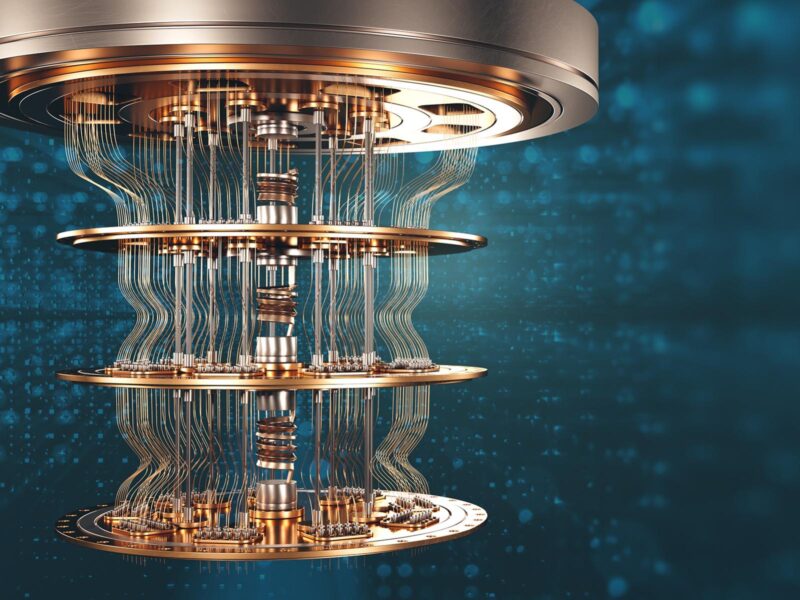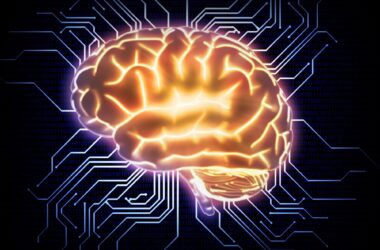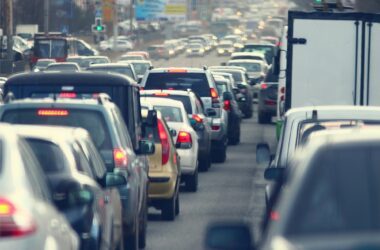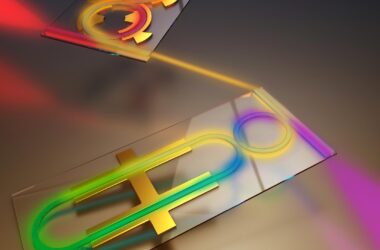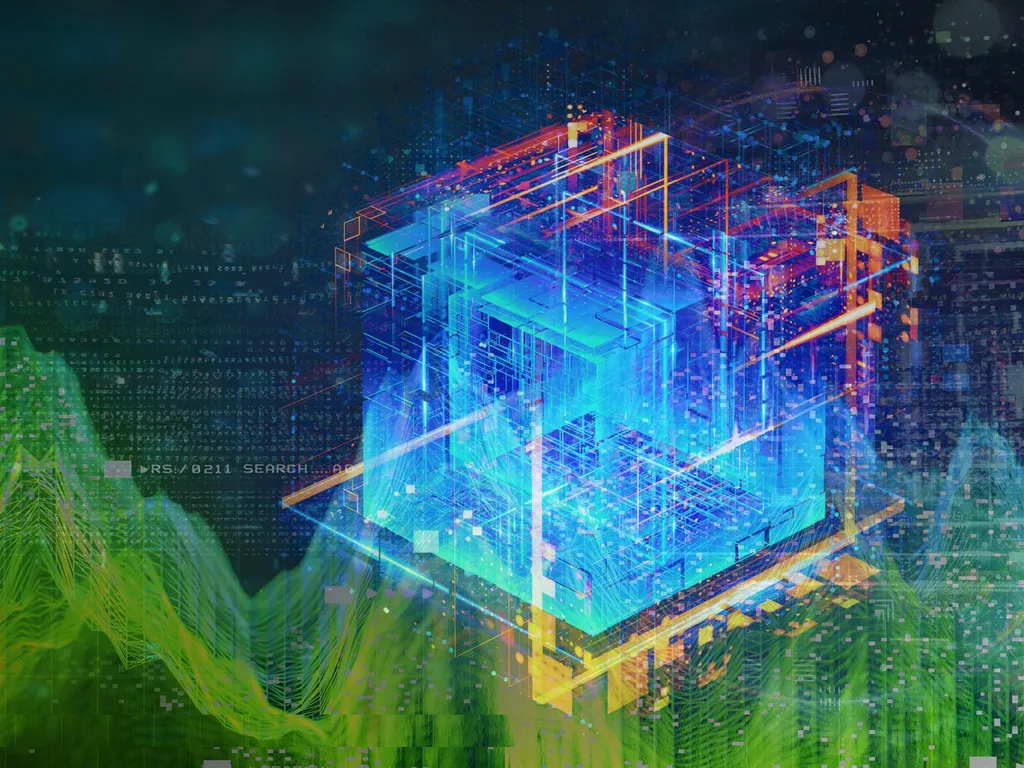
Les ordinateurs quantiques sont particulièrement aptes à considérer simultanément un grand nombre de combinaisons possibles, mais l’instabilité des qubits dans les appareils modernes contribue aux erreurs de calcul. Crédit : Image de Timothy Holland Pacific Northwest National Laboratory
Simuler un avenir quantique
Les ordinateurs quantiques devraient révolutionner la façon dont les chercheurs abordent les problèmes informatiques complexes. Ces ordinateurs sont en cours de développement pour relever des défis majeurs dans des domaines scientifiques fondamentaux tels que la chimie quantique. Dans son état actuel de développement, quantum computing is very susceptible to noise and disruptive influences in the environment. This makes quantum computers “noisy,” since quantum bits, or qubits, lose information when they go out of sync, a process known as decoherence.
To address the constraints of current quantum computers, researchers at Pacific Northwest National Laboratory (PNNL) are constructing simulations that demonstrate how quantum computers work.
“When we try to directly observe the behavior of quantum systems, like qubits, their quantum states will collapse,” explained PNNL Computer Scientist Ang Li. Li is also a researcher at the Quantum Science Center and the Co-Design Center for Quantum Advantage, two of the five Department of Energy National Quantum Information Science Research Centers. “To get around this, we use simulations to study qubits and their interaction with the environment.”

Artist’s rendering of a quantum computer. Credit: Image by Jeffrey London | Pacific Northwest National Laboratory
Li and collaborators at Oak Ridge National Laboratory and Microsoft employ high-speed computing to create simulators that imitate genuine quantum devices for executing sophisticated quantum circuits. They recently integrated two distinct kinds of simulations to produce the Northwest Quantum Simulator (NWQ-Sim), which is used to test quantum algorithms.
“Testing quantum algorithms on quantum devices is slow and costly. Also, some algorithms are too advanced for current quantum devices,” said Li. “Our quantum simulators can help us look beyond the limitations of existing devices and test algorithms for more sophisticated systems.”
Algorithms for quantum computers
Nathan Wiebe, a PNNL joint appointee from the University of Toronto and an affiliate professor at the University of Washington, is taking a different approach to writing quantum computer code. Though being constrained by the capabilities of existing quantum devices might be irritating at times, Wiebe views this obstacle as an opportunity.
“Noisy quantum circuits produce errors in calculations,” said Wiebe. “The more qubits that are needed for a calculation, the more error-prone it is.”
Wiebe and collaborators from the University of Washington developed novel algorithms to correct for these errors in certain types of simulations.
“This work provides a cheaper and faster way to perform quantum error correction. It potentially brings us closer to demonstrating a computationally useful example of a quantum simulation for quantum field theory on near-term quantum hardware,” said Wiebe.

Quantum circuit simulation can reveal the impact of noise on intermediate-scale quantum devices. Credit: Composite image by Donald Jorgensen | Pacific Northwest National Laboratory
Dark matter meets quantum computing
While Wiebe seeks to reduce the noise by developing error-correcting algorithms, physicist Ben Loer and his colleagues turn to the environment to manage external sources of noise. Loer employs his experience in creating ultra-low levels of natural radioactivity, which is required to search for experimental evidence of dark matter in the universe, to aid in the prevention of qubit decoherence.
“Radiation from the environment, such as gamma rays and X-rays, exists everywhere,” said Loer. “Since qubits are so sensitive, we had an idea that this radiation may be interfering with their quantum states.”
To test this, Loer, project lead Brent VanDevender, and colleague John Orrell, teamed up with researchers at the Massachusetts Institute of Technology (MIT) and MIT’s Lincoln Laboratory used a lead shield to protect qubits from radiation. They designed the shield for use within a dilution refrigerator—a technology used to produce the just-above-absolute-zero temperature necessary for operating superconducting qubits. They saw that qubit decoherence decreased when the qubits were protected.
While this is the first step toward understanding how radiation affects quantum computing, Loer plans to look at how radiation disturbs circuits and substrates within a quantum system. “We can simulate and model these quantum interactions to help improve the design of quantum devices,” said Loer.
Loer is taking his lead-shielded dilution refrigerator research underground in PNNL’s Shallow Underground Laboratory with the help of PNNL Chemist Marvin Warner
“If we develop a quantum device that doesn’t perform as it should, we need to be able to pinpoint the problem,” said Warner. “By shielding qubits from external radiation, we can start to characterize other potential sources of noise in the device.”
Vidéo : Laboratoire national du nord-ouest du Pacifique
Créer un écosystème quantique dans le Nord-Ouest du Pacifique
Le PNNL soutient une grande variété de recherches liées à la quantique, allant des simulations quantiques et du développement d’algorithmes pour la chimie quantique au développement de matériaux de précision pour les dispositifs quantiques.
Le PNNL s’associe également à d’autres institutions du nord-ouest du Pacifique pour accélérer la recherche quantique et développer une main-d’œuvre formée aux sciences de l’information quantique par le biais du Northwest Quantum Nexus (NQN). En outre, le NQN accueille une série de séminaires auxquels participent des leaders de la recherche quantique. Le NQN crée des synergies entre des entreprises, telles que Microsoft et IonQ, ainsi que l’université de l’Oregon, l’université de Washington et l’université de l’État de Washington.
“Le PNNL, en cultivant les collaborations entre l’industrie et les universités, jette les bases de l’informatique quantique dans la région du nord-ouest du Pacifique et prépare le terrain pour l’informatique hybride classique-quantique de demain”, a déclaré James (Jim) Ang. Ang est le scientifique en chef pour l’informatique et le chef de secteur du PNNL pour le programme de recherche avancée en informatique scientifique du ministère de l’énergie (DOE).
La recherche de Li a été soutenue par le DOE Office of Science (SC), National Quantum Information Science Research Centers : Quantum Science Center et Co-Design Center for Quantum Advantage. Il a également été soutenu par l’initiative de recherche et de développement dirigée par le laboratoire de l’accélérateur avancé de la science quantique du PNNL.
Les recherches de Wiebe ont été soutenues par le DOE, SC, Office of Nuclear Physics, Incubator for Quantum Simulation, et le programme DOE QuantISED. Wiebe est également soutenu par le DOE, SC, National Quantum Information Science Research Centers, Co-Design Center for Quantum Advantage, où il est le chef de file en matière de logiciel.
Les recherches de Loer ont été soutenues par le DOE, SC, Office of Nuclear Physics et Office of High Energy Physics. Les recherches de Warner ont été soutenues par le DOE, SC, National Quantum Information Science Research Centers, Co-Design Center for Quantum Advantage.
Références : “Impact of ionizing radiation on superconducting qubit coherence” par Antti P. Vepsäläinen, Amir H. Karamlou, John L. Orrell, Akshunna S. Dogra, Ben Loer, Francisca Vasconcelos, David K. Kim, Alexander J. Melville, Bethany M. Niedzielski, Jonilyn L. Yoder, Simon Gustavsson, Joseph A. Formaggio, Brent A. VanDevender, et William D. Oliver, 26 août 2020, Nature.
DOI : 10.1038/s41586-020-2619-8
“Quantum Error Correction with Gauge Symmetries” par Abhishek Rajput, Alessandro Roggero et Nathan Wiebe, 9 décembre 2021, arXiv.
DOI : 10.48550/arXiv.2112.05186
